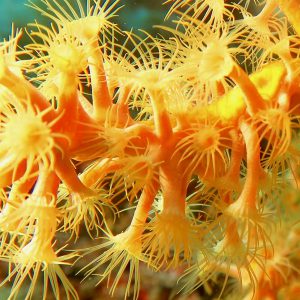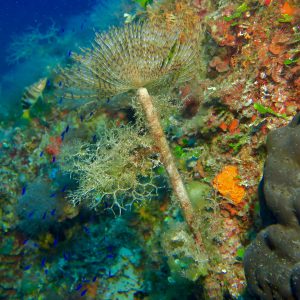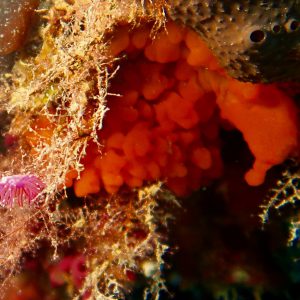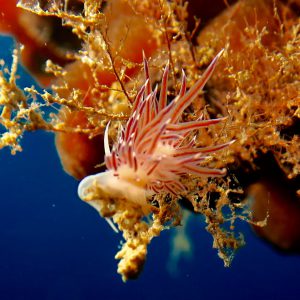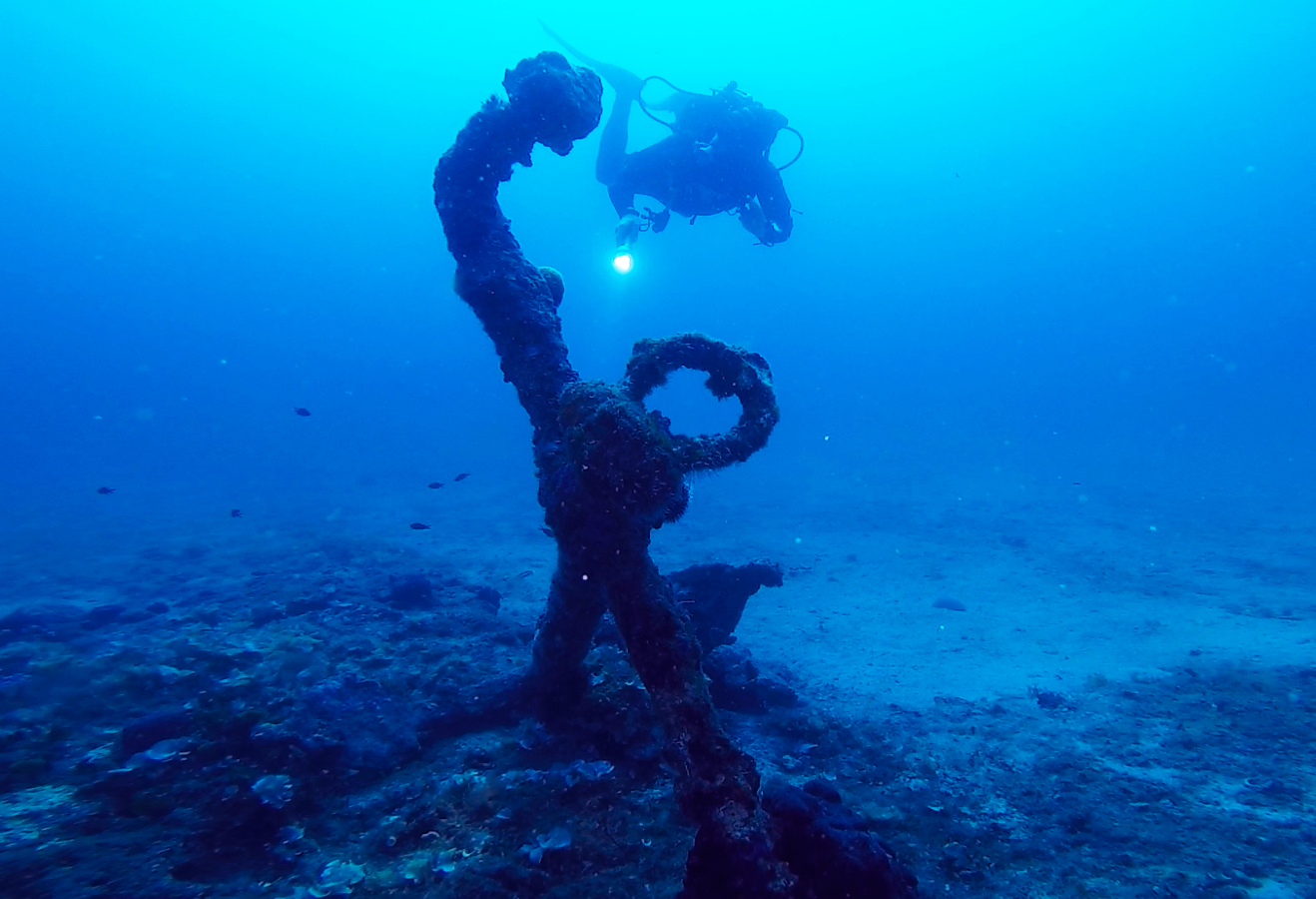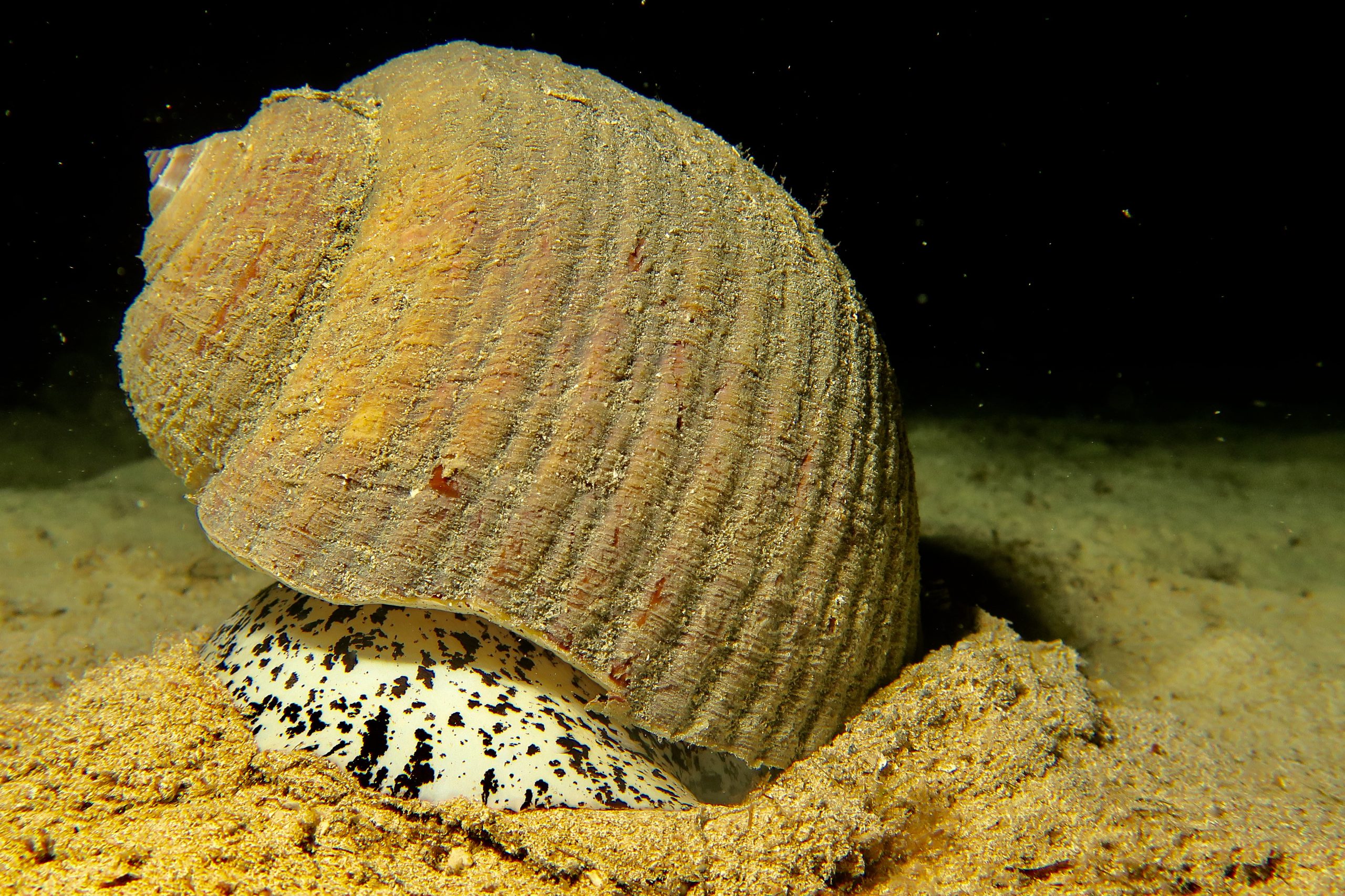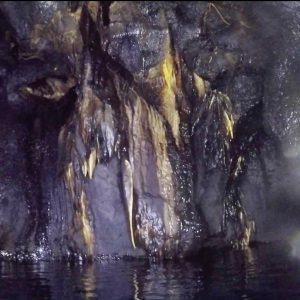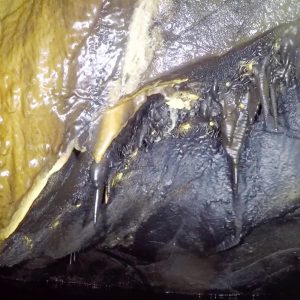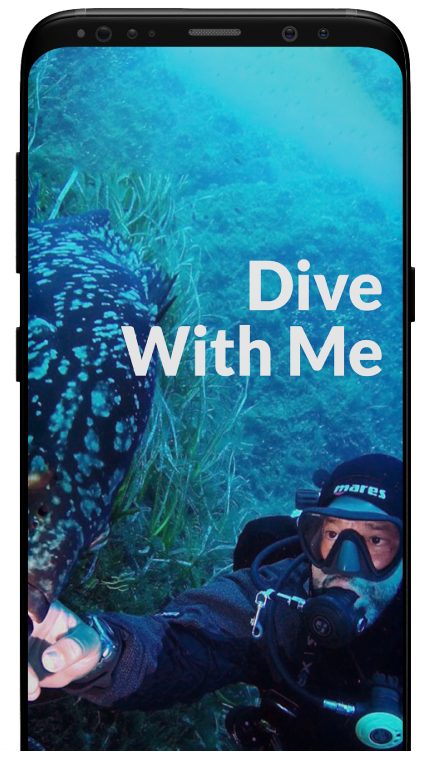Punta Lea: immersion in the Porto Selvaggio Park
Exactly four years ago I visited Salento for the first time. From my first meeting with Porto Selvaggio, I remember the chromatic contrasts of the blue sky, the bright green Mediterranean scrub, the pale rocks and the clear and turquoise sea. I dived into those waters without knowing that there would be a beautiful underwater itinerary below.
Punta Lea is a small protuberance that delimits the rocky bay of this natural park to the north and which, in summer, is packed with tourists who bathe and who venture among its ravines with masks and fins. Among them some spearfisher seeks success in an attempt to bring a booty to the surface.
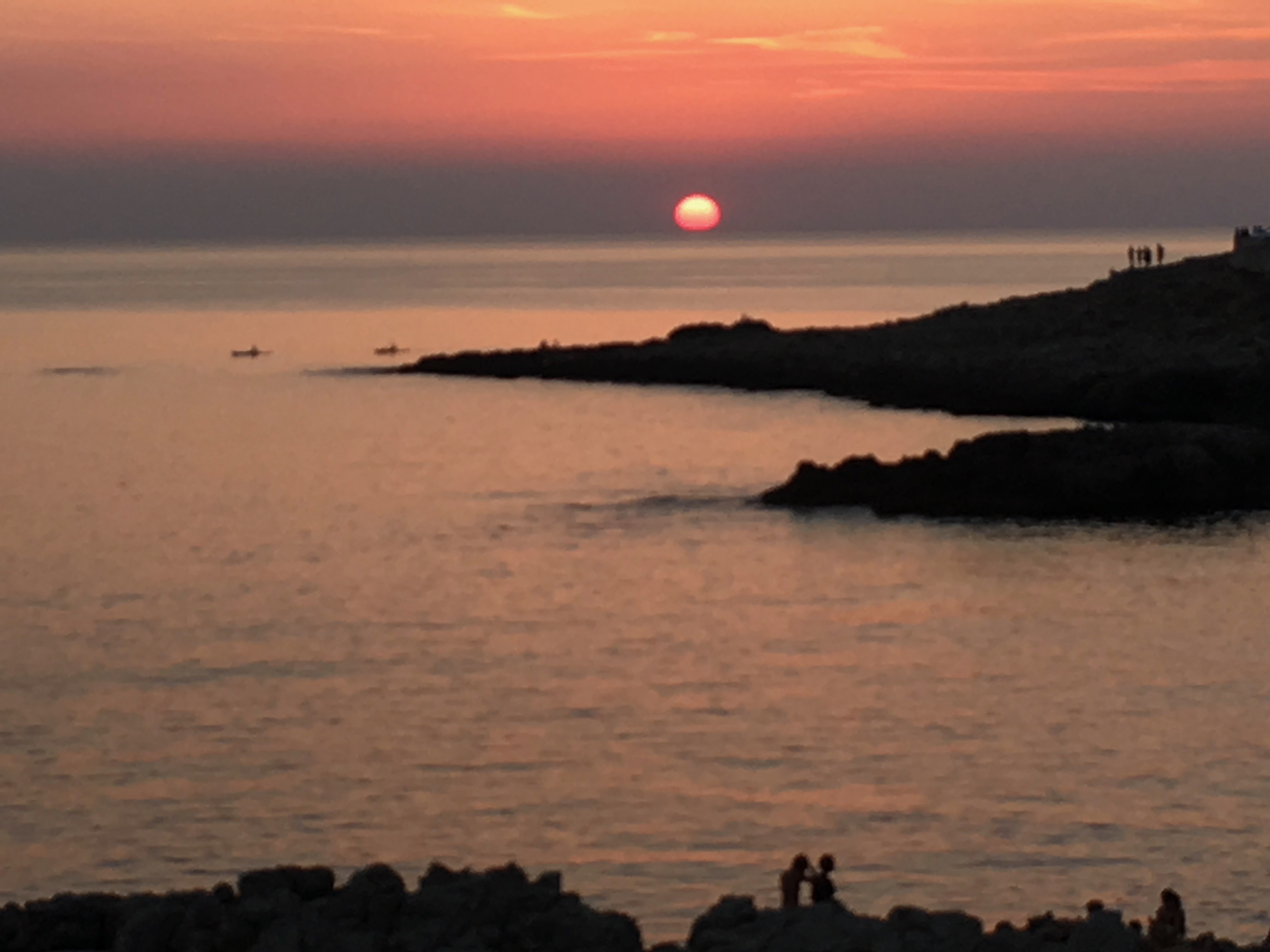
The dive began in a stretch in which the rocky prominence of the tip descended gently below sea level, forming a small semicircular loop where several times I have come across some voracious amberjack which, with a powerful swim, crosses the pelvis, so fast that I could not immortalize her with a photograph or video. What a pity! This summer I have visited this site three times and have appeared on two occasions. Although I was prepared, on the first occasion with the camera set up and on the second with the GoPro ready, these wonderful predators left me with an inch of my nose.
A colorful tunnel was born from a natural cavity in the rock and a very colorful wall appeared. My curious eye and, above all, my desire to immortalize every moment of underwater life, pushed me to inspect it meticulously. It was completely covered with sponges, from the most common gray and pink (with the usual sea cow perched on them) to those with the most striking colors, yellow and orange. In the more shaded areas the sea daisies, small yellow madrepores, increased the fabulous chromatic contrast. On the ledges of the rock, in the few spaces left free, the bryozoans tenaciously resist the direct current. The camera was ready to capture one of my favorite subjects: the nudibranch.
I continued towards the open sea, on a sandy bottom, towards a shoal on whose wall there was a beautiful admiralty anchor, completely covered with concretions.
The journey on the sand is always full of encounters. I omit the mullet, sole or turbot. In that area lived a fantastic Tonna Galea. I was at a depth of 22 meters, I could afford to stay with her for about ten minutes. I filmed her in every point of her, fascinated by the spirals of her shell, I waited for her to come out of it and I followed her slow path that left indelible traces on the sand.
I returned to the wall and entered the numerous passages between the karst rock to admire the play of light that appears at the exit thanks to clouds of white bream whose silver liveries reflect the rays of the hot afternoon sun.
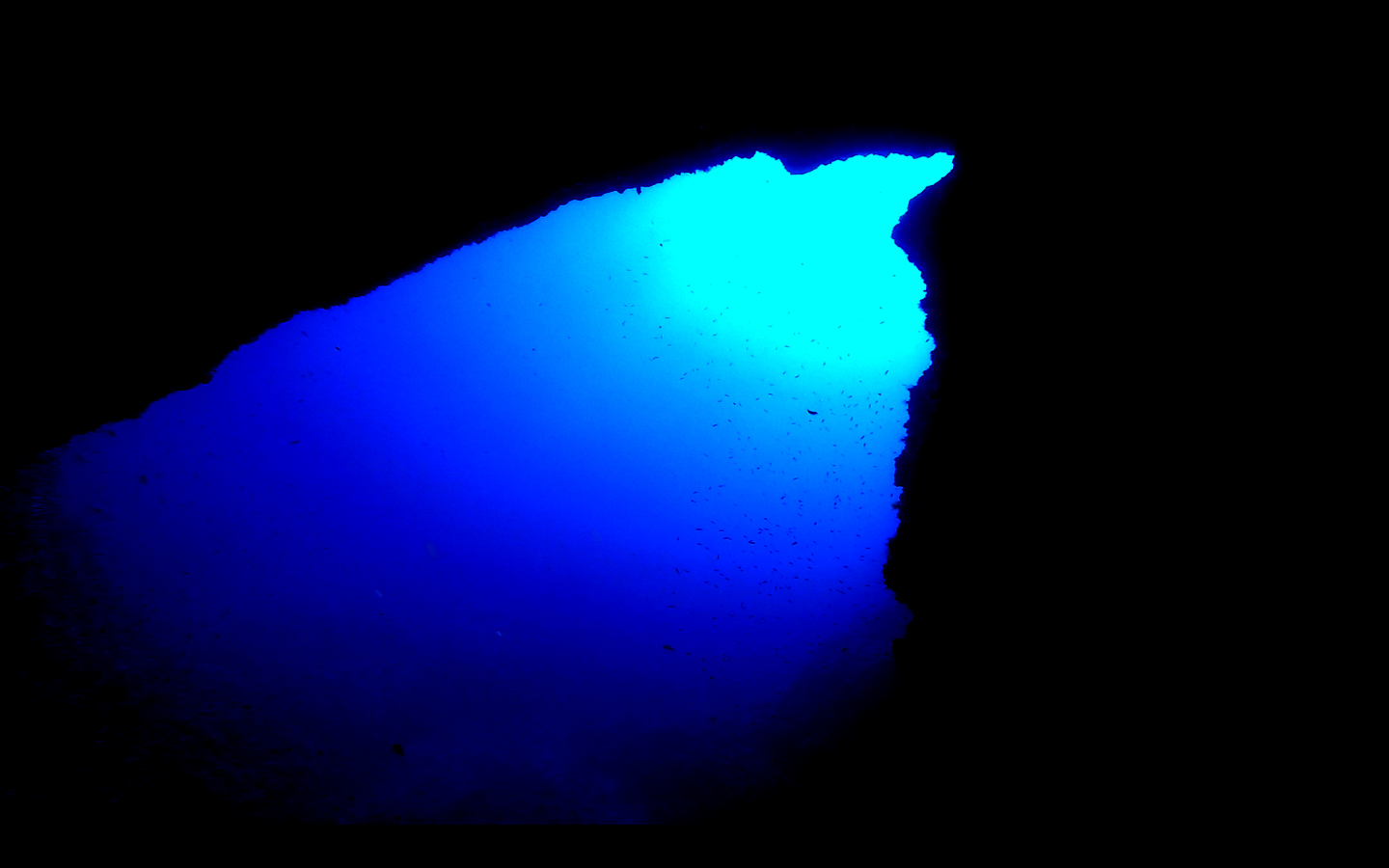
The last meeting, before making a safety stopped in the midst of the damselfish, was with a ringed sea hare. It was lazily leaning on a rock and was so big that I had to move away to fit it all into the frame. I waited patiently for it to move, for it to allow me to see it in all her sinuosity and for maybe giving me a dance. Unfortunately it didn’t feel like it.
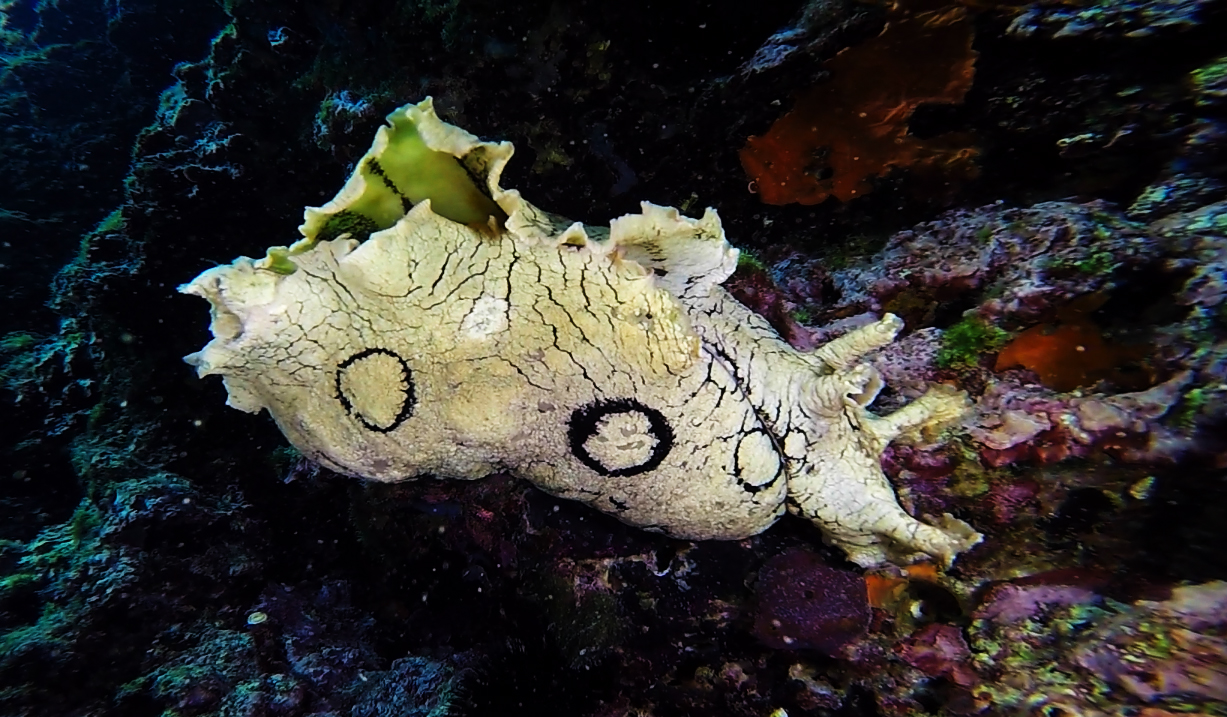
My dive buddies had been up for a while, maybe it was better better for me to go back up too.
This dive had a maximum depth of 22 meters and is perfect for Open Water certified divers. The high concentration of flora and fauna allows you to fully appreciate the riches that the Mediterranean Sea can offer. For more experienced divers it is a nice second dive while, for those with the appropriate certification, it is a wonderful opportunity for a night dive. It is ideal for underwater photographers.
La Grotta delle Corvine: the home of the last Neanderthal
The Costa del Sud Diving Service dinghy docks near the coast of the Uluzzu Bay, a small natural gulf created within the protected area of Porto Selvaggio.
This area represents an important archaeological site, as it houses one of the most important prehistoric deposits, among those known, in Europe, thanks to the presence of the caves of the Cavallo, of Carlo Cosma and of Uluzzo.
The findings have made it possible to ascertain that the last Neanderthal lived here, or perhaps the first European sapiens, and to study some of the behaviors of prehistoric man who lived on this territory.
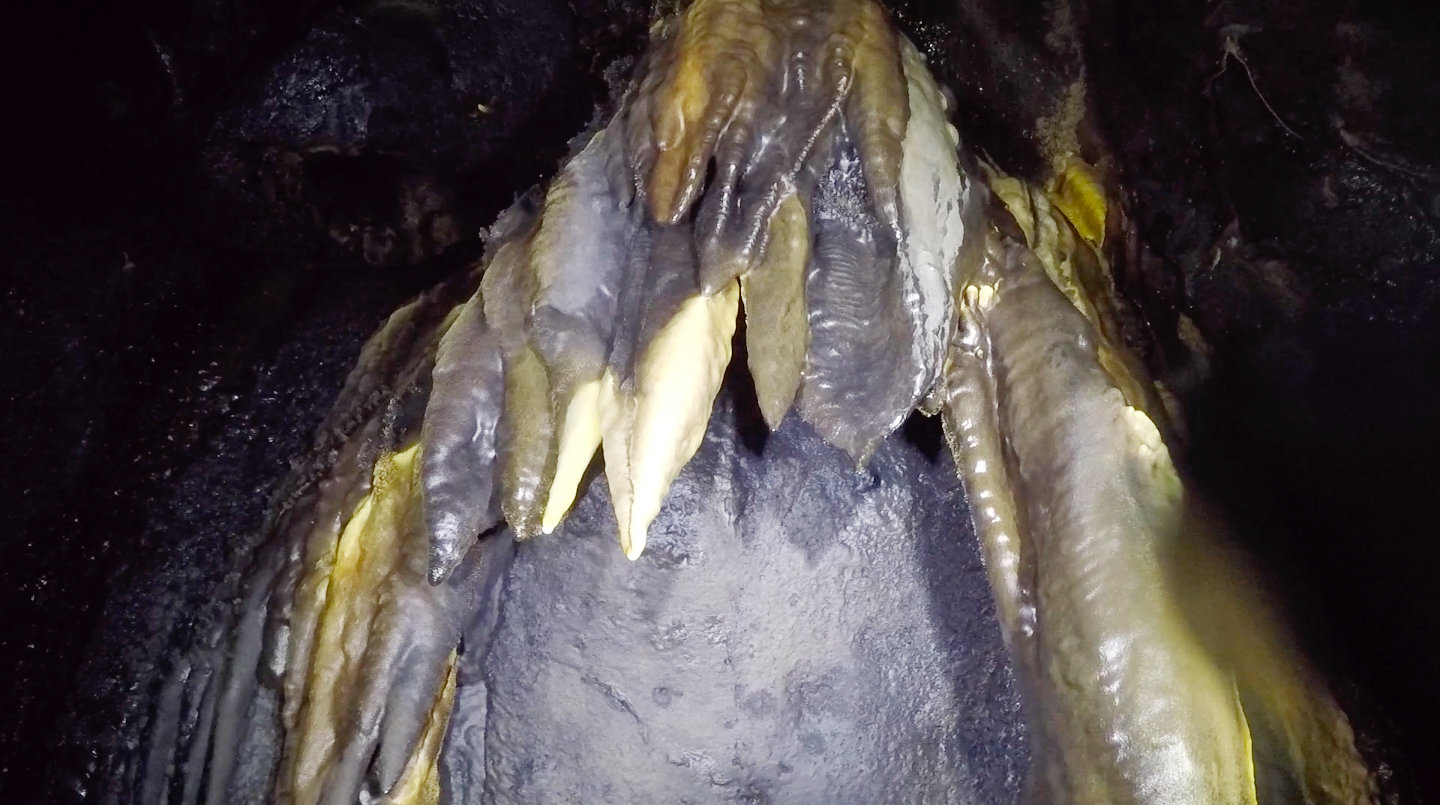
The Grotta delle Corvine is the largest submerged karst cavity among those, until now, located in the Salento coastal area.
It was renamed this way because during the first inspections, about twenty years ago, a family of splendid ravens lived here, replacing prehistoric man.
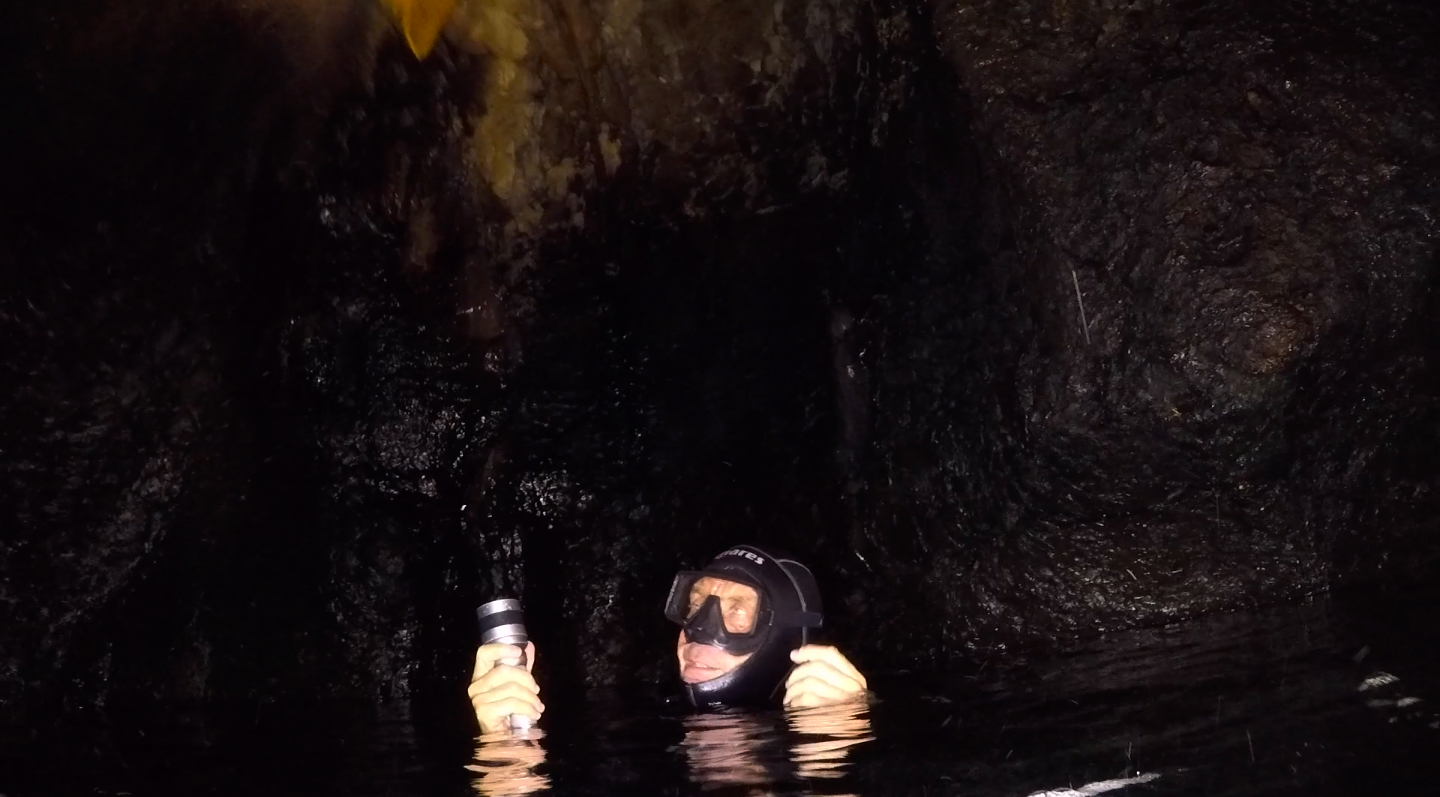
The large entrance opens at a depth of about 12 meters and leads into a spacious gallery, more than twenty long, which leads to a large room at the bottom of which there are three air bubbles, not communicating with the outside, the whose walls are adorned with spectacular stalactites and stalagmites still active today.
Some of these exceed one meter in length and are irrefutable witnesses of a long period during which the cave was located above the sea level and therefore probably used as a dwelling by our ancestors.
It was a very special dive, in some ways atypical. The cave chamber is very large and its height allows divers not to raise suspension due to kicking. The vaults are covered with madrepores and as you penetrate you can admire the stalactites and stalagmites that have grown on the rock that was subsequently conquered by the sea.
But the extraordinary part is the speleological component with a visit to the three air chambers where I was able to admire the works of art that nature is still creating and breathe the humid vapors generated by the sea that meets these closed air spaces.
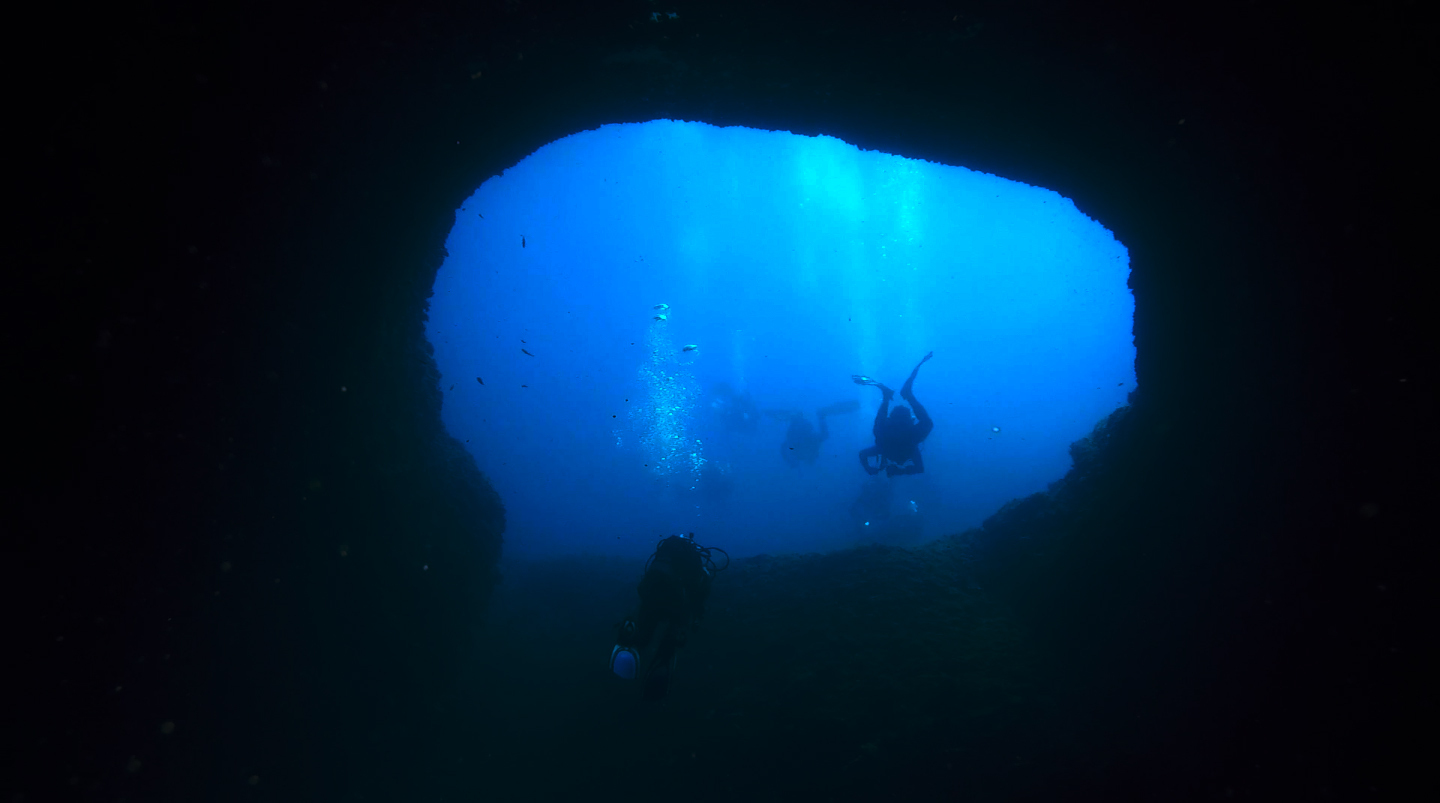
Due to its very shallow depth, this dive is also suitable for the first level diver. However, I always recommend the necessary training before diving into an enclosed space.
👌


